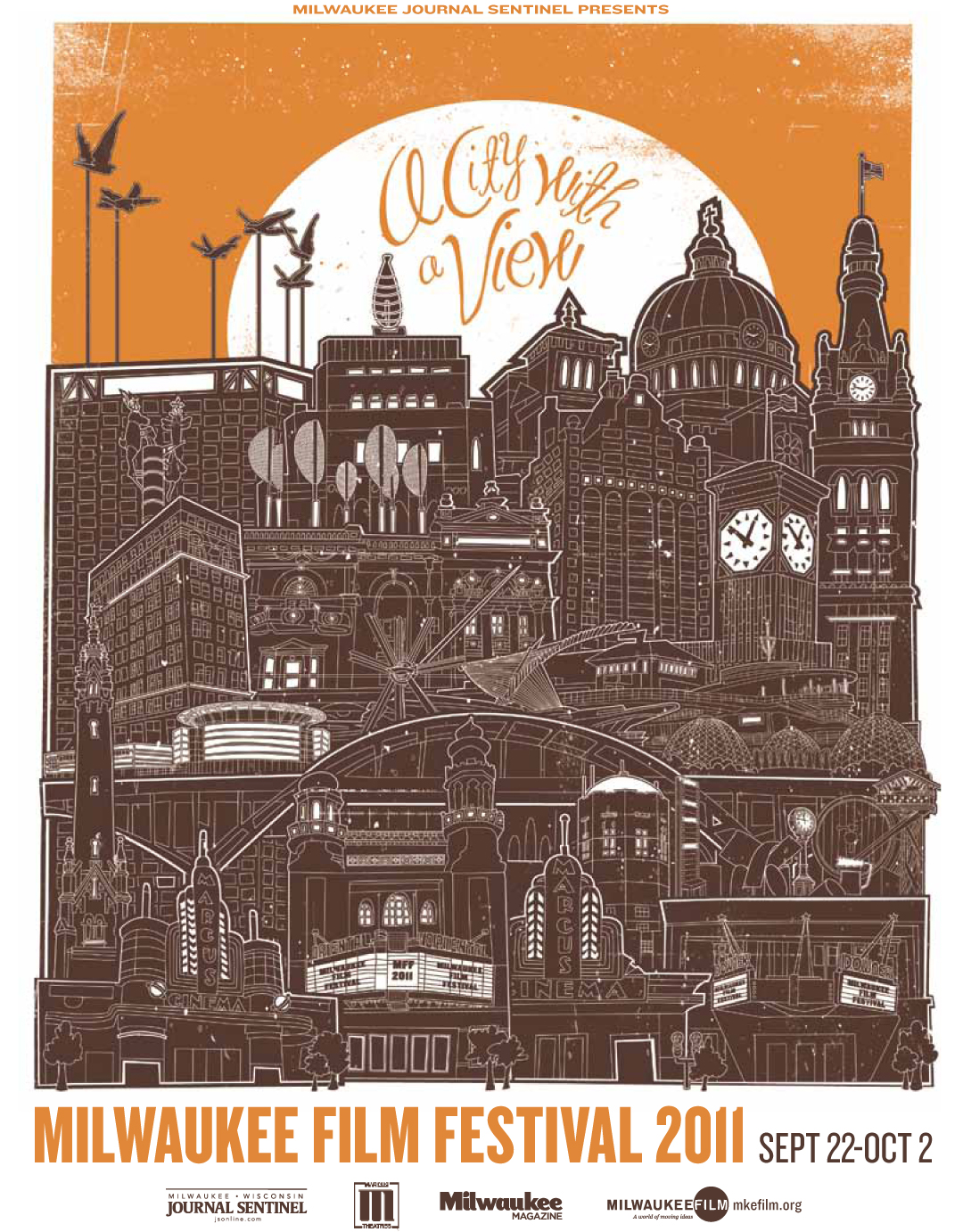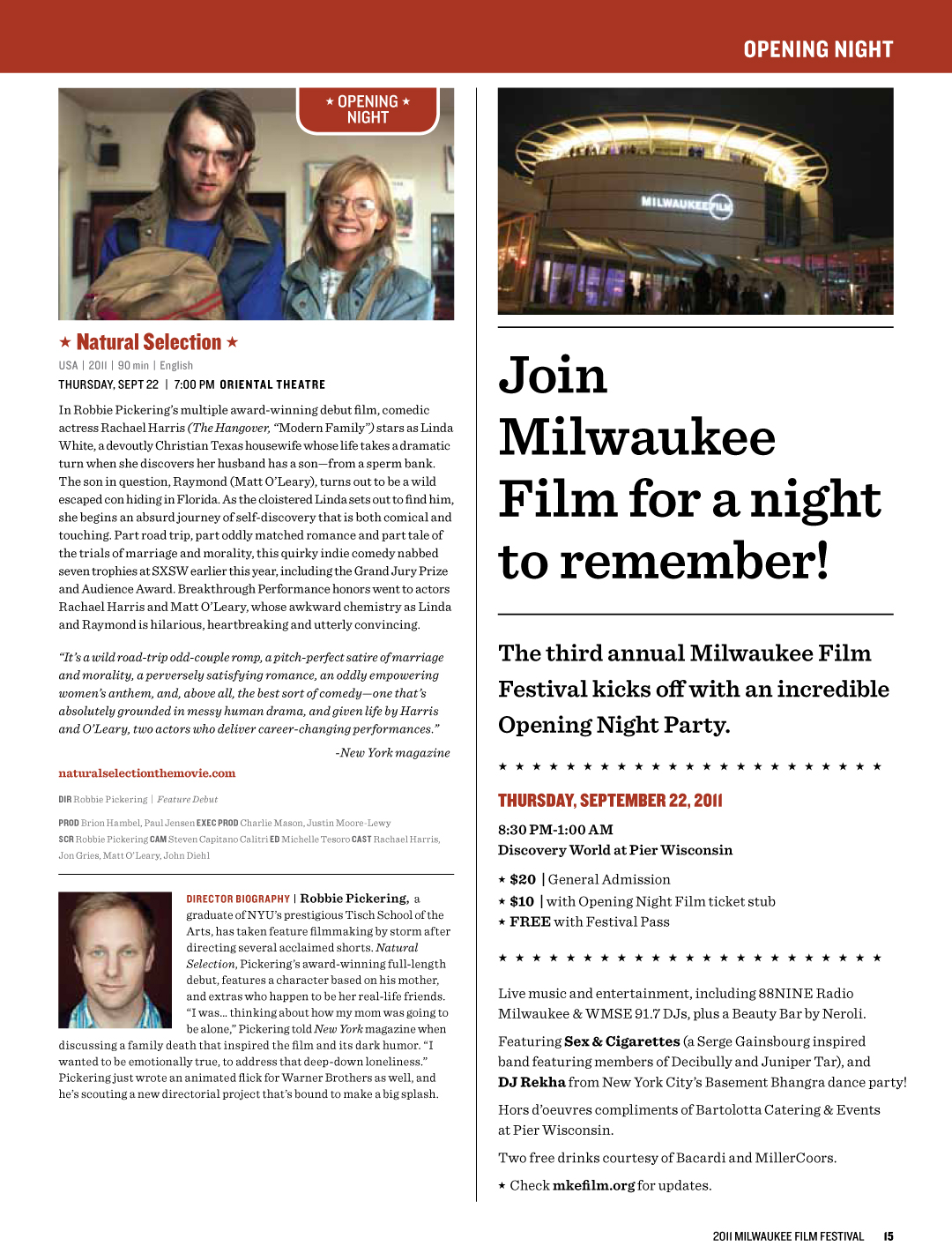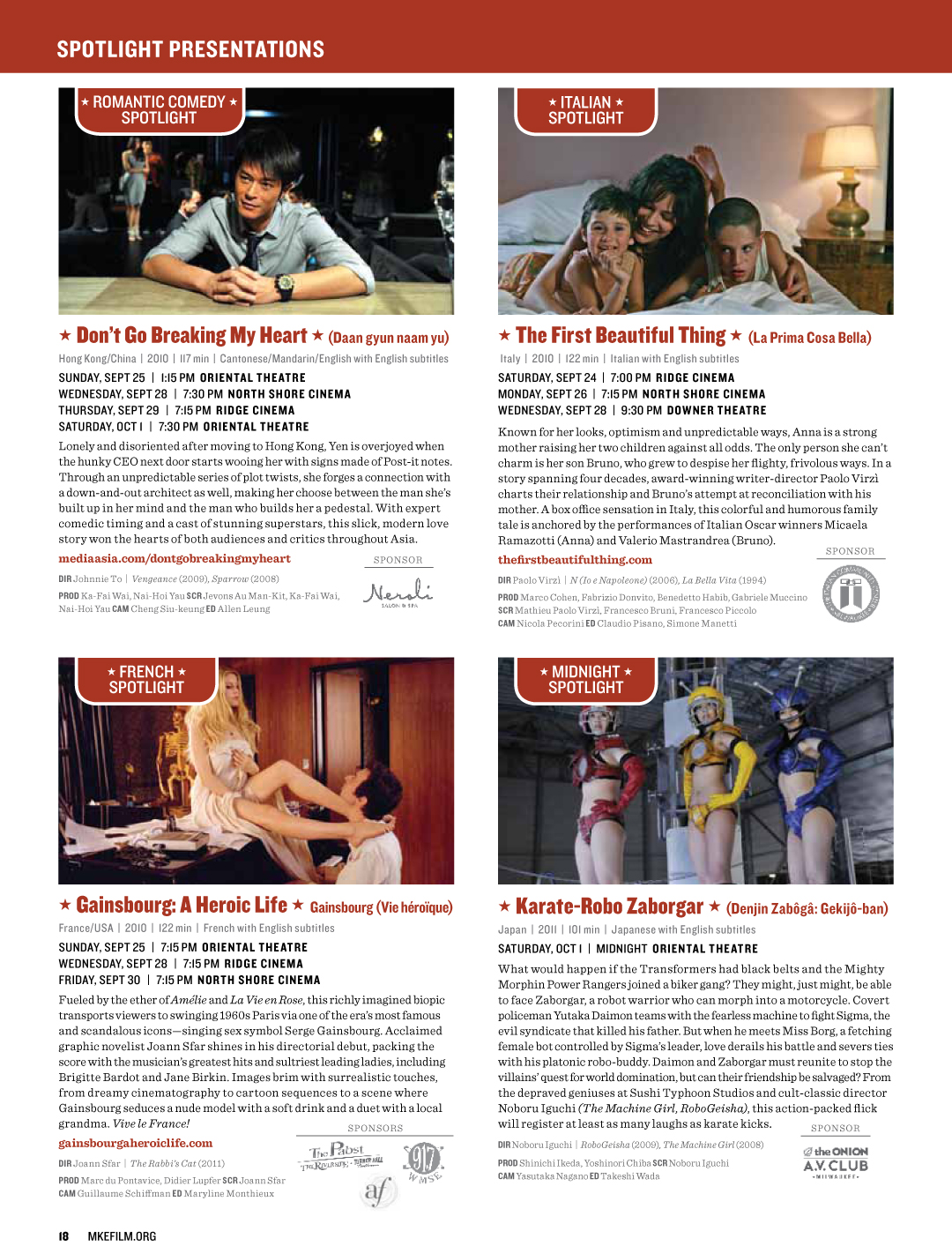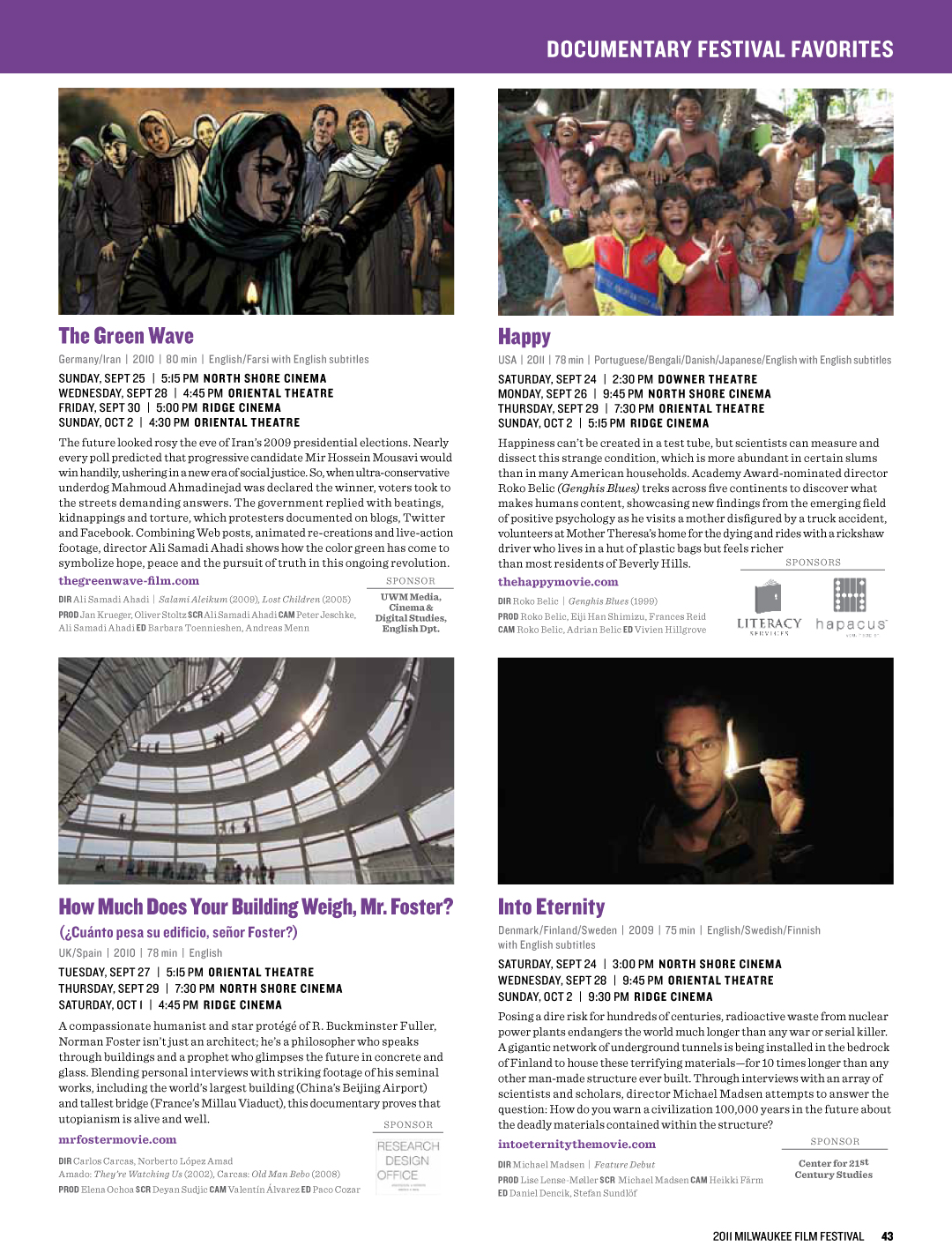





Category Archives: Film
Richard Ayoade’s The Double
I feel for Simon James, protagonist of The Double. A meek fellow prone to anxiety and self-doubt, he’s adrift in a bleak dystopian world. People constantly forget his name. Sometimes they forget he exists. He throws himself into his job, as if to justify his existence, but he’s mired in the role of worker bee. It’s a predicament that would drive many people mad, and it gets a whole lot worse.
The film is an adaptation of Dostoevsky’s excellent 1866 novella, modernized and stylized by Richard Ayoade, star of the devastatingly funny British sitcoms The IT Crowd and Garth Marenghi’s Darkplace. Like his previous film, the 2010 coming-of-age tale Submarine, The Double has been marketed as a drama, but it’s also a blacker-than-black comedy. As the story unfolds, the misfortunes plaguing Simon (Jesse Eisenberg) become increasingly absurd. It’s both infuriating and intoxicating to watch.
The weirdness begins when Simon’s briefcase gets caught in the door of a train, which absconds with his employee ID. He asks a security guard to let him into the government agency where he works. Though he’s had the same job for seven years, the guard doesn’t recognize him and a struggle ensues. Simon spends his days pining for Hannah (Mia Waskikowska), a coworker who lives in the building across the street from his apartment, but she barely acknowledges his presence. And no matter how hard he works, he can’t get his boss to realize his name’s not Stanley.
When Simon notices that a new employee looks just like him, he can’t believe his eyes. The resemblance is purely physical, though. The look-alike, James Simon (also Eisenberg), is a charismatic chick magnet. He oozes confidence, so much that people ascribe success to him instantly, even if he hasn’t earned it. Before long, James has Simon doing all of his work as he rolls in the hay with Hannah, the boss’ daughter and others. Meanwhile, Simon’s on the verge of a meltdown, not that anyone would notice.
You will notice, of course, but you are not part of Simon’s reality, which Ayoade casts in the yellows, browns and grays of Nighthawks, Edward Hopper’s famous painting of four strangers avoiding each other in a diner. Dim, buzzing lights and a hazy psych-pop soundtrack make the proceedings seem antique and somewhat artificial, like a half-remembered dream.
Ayoade has clearly studied the shadowy aesthetics of David Lynch and Terry Gilliam, but he also seems taken with Jean-Pierre Jeunet’s Amélie. Certain details, like the telescope Simon uses to peer into Hannah’s apartment and the book he lovingly makes from her torn-up drawings, are very similar to those in Jeunet’s tale of a shy Frenchwoman. But Amélie gains whimsy from its subject’s colorful imagination, whereas The Double focuses on the dark side of Simon’s identity crisis. Even if you identify with Simon’s plight, you may glimpse your inner James as you chuckle at Simon’s troubles.
Hong Sang-soo’s In Another Country
At the start of In Another Country, the newest dramedy by Korean writer-director Hong Sang-soo, we meet a Korean film student distraught about a situation involving her uncle.
“He’s not even a human being,” she insists to her mother, who, in turn, pledges to fix the problem.
This promise does not satisfy the young woman. To calm her nerves, she must write a script. It seems the only way to dull the pain and start processing her emotions. It’s also a way for Sang-soo to examine some of the illusions filmmakers create on the screen.
The script isn’t one story but a trio of 30-minute episodes set in the same Korean town. Each episode stars the same actors, but some of them play different characters in every go-round. French arthouse luminary Isabelle Huppert portrays three French visitors named Anne. Determining who is playing whom – and what makes each Anne unique – can take some time and patience. The anxiety and confusion that result are useful, though. They approximate how many people feel when they arrive in a country where they know almost no one and barely speak the language. They also help the audience empathize with Anne, whether she’s in South Korea for work, sex or spiritual healing.
Huppert serves as the film’s anchor. Charming and gorgeous, she’s hard to look away from as she smokes cigarettes on balconies and strolls down long roads with eye-catching props – a bold red dress, a delicate umbrella. At the rooming house where she’s staying, her hosts make painfully polite conversation in English, then rail at one another in Korean. Anne can sense the tension that surrounds her, but hardly anyone will acknowledge it, even when she’s committed an infraction, presumably because she’s a guest.
An obsession with beauty also complicates matters. Male characters compliment Anne’s looks almost constantly, while she claims, unconvincingly, that the dreary seaside village is stunning. All three Annes search for one of the town’s few scenic landmarks, a small lighthouse, which leads them into awkward, humorous situations. The best of these moments involve a lifeguard (Yoo Jun-sang), who, in one scene, produces a “small lighthouse” that is actually a camping lantern. And when the second Anne – a nervous married woman on a weekend fling with her boyfriend – finds the real lighthouse, she utters “beautiful” over and over again. The word seems like a sigh of relief for both her and the screenwriter from the opening scene.
Throughout In Another Country, Sang-soo reminds us how cameras can enhance beauty or diminish it, and how editing is just as important to storytelling as creating. Though the acting and visuals emanate naturalism, abrupt zoom-ins shatter the illusion of reality. Likewise, repetition of certain elements from story to story – a broken soju bottle, an impromptu shopping trip – emphasize filmmakers’ power to remix, recycle and reinvent. Anne doesn’t control her own destiny; the person who created her does. Another recurring image – Anne walking down the yellow line that bisects the main road – hints at the boundaries filmmakers construct between their characters and the audience.
While these concepts aren’t groundbreaking, they’re enjoyable to watch if you can tolerate feeling disoriented, anxious and perhaps a bit suspicious of filmmakers’ intentions.
Miguel Gomes’ Tabu
In Tabu, a haunting new film by Portuguese director Miguel Gomes, a human-rights activist named Pilar (Teresa Madruga) prays to Anthony of Lisbon, the patron saint of lost items and lost spirits. She’s trying to help her elderly neighbor, Aurora (Laura Soveral), who has just lost all of her money at a casino and seems be losing her mind as well.
The old woman recounts a dream starring a crocodile, some angry monkeys, a train-ticket machine that turns into a slot machine, and someone muttering, “Lucky at gambling, unlucky at love.” This story sounds bonkers, but it turns out to be rooted in reality. The real question involves who – or what – has truly been lost.
Gomes divides Tabu into two main sections, one set in present-day Lisbon and the other in one of Portugal’s African colonies, about 50 years earlier. The former, titled “Paradise Lost,” illustrates Pilar’s banal routine, which involves going to the movies and slogging through dates with a man she doesn’t love. At one point, Pilar’s companion gets so bored that he falls asleep at the cinema, causing her to cry.
“Paradise,” Tabu‘s latter section, brims with danger, beauty and romance. Aurora, then a gorgeous young newlywed (Ana Moreira), hunts big game amid jungle plants and tall savannah grasses. While pregnant, she has a love affair with a handsome adventurer named Ventura (Carloto Cotta). Meanwhile, tensions mount between the colonists and natives, portending what will soon become the Portuguese Colonial War. Aurora sports a fearless, almost masculine personality, which is palpable even though there’s no dialogue in this section.
While the characters are silent, sounds such as pebbles landing in a pool and a Portuguese version of the Ronettes’ “Be My Baby” give the narrative a dreamlike quality. But, as the elder Aurora notes early in the film, dreams cannot be controlled. They’re inherently risky. They can be playgrounds for guilt, which, in Aurora’s case, stretches far beyond the borders of adultery.
Tabu‘s stunning black-and-white images reference both the silent-film era and the French New Wave movement, and a fairy tale of sorts emerges from the poetic anecdotes present-day Ventura (Henrique Espírito Santo) shares with Pilar in a cafe flanked by tropical plants and a children’s ride that looks like a crocodile.
But Tabu isn’t just any fairy tale; it’s more of an allegory. This becomes clear in its film-within-a-film prologue, in which an explorer dives into the jaws of a crocodile, despite his culture’s disapproval of suicide, because he can’t bear losing his beloved. Aurora is like the explorer, hunting for riches. She ventures boldly into wild, unknown places but virtually ignores the native people who tend to her needs. And despite her strength, she’s irreparably damaged when her lover vanishes. The crocodile, which appears throughout the film, seems to represent her downfall, or her decision to break a taboo at her own peril. As the prologue’s narrator intimates, the bravest soul can’t escape an aching heart, even if he can stomach a guilty conscience.
A gift from The Giver’s Lois Lowry
“You’re lucky you don’t have braces,” Lois Lowry remarks when I tell her I’m calling from Isthmus. She says the newspaper’s name is a tongue-twister.
We both chuckle. I remember being a metal-mouth when I was 13, about the same age as Jonas, the protagonist of her Newberry-winning young-adult novel The Giver. It’s hard enough to speak eloquently as an adult, without any dental hardware. I’m thankful I’m not one of the kids in the book, who are punished when they misspeak, whether mispronouncing a word or choosing the “wrong” term for what they’re trying to describe.
This problem is especially troublesome for Jonas, who is chosen to become the Receiver in his orderly dystopian community. No one remembers the distant past, except for the person chosen to “contain” all of the pleasures and horrors of history. This person, the Receiver, is the only one who knows of foreign things like color, animals and even snow. He must experience them, and the feelings they generate, all by himself. Not a soul — except for the few others who’ve held the title — has the slightest notion of what he’s going through.
Jonas often wonders how he’d try to describe the memories of the past he’s begun to contain. They’re transmitted through the touch of the outgoing Receiver, who has grown old and weary. To Jonas, this man is known as the Giver. Through this mentor, Jonas receives his first sled ride and his first rays of sunshine.
“What words could you use that would give another the experience of sunshine?” Jonas wonders. Not that he’s allowed to speak of the memories he’s receiving. Or that anyone would understand or believe him. But he can’t help but ponder.
This question is similar to the ones facing Children’s Theater of Madison as it prepares The Giver for the stage. Lowry will visit Madison on Jan. 31, sharing insights on the book’s transition from the page to the stage to the silver screen in a free presentation at the Central Library. She recently traveled to South Africa, where parts of a movie based on the book were being filmed. Starring Jeff Bridges, Meryl Streep and other Hollywood heavyweights, it’s sure to cause a stir when it debuts in August. So is CTM’s stage production, which hits Overture Center’s Playhouse Feb. 15-23. After all, the story is one of the most controversial in Y.A. literature. Parents have tried to ban the book from the curriculum in school districts across the country, often in response to a scene involving euthanasia.
Still, The Giver is a popular novel among teens and tweens. Ask a group of them what they think of the book’s ending, and you’re bound to spark a debate. It’s open to interpretation, to say the least. It’s also incredibly moving, which should help imprint the story on theatergoers’ minds. That’s just how Lowry wants it to be.
Comfort vs. security
I first experienced Lowry’s writing through her series of Anastasia books, which follow the trials and tribulations of a girl “just trying to grow up.” They’re funny and poignant, and I see hints of them in the film Ghost World, the TV show Daria and the comedy of Aubrey Plaza. Lowry gets awkwardness and the angst that often comes with it. These qualities also apply to Jonas in The Giver, but the story is much more chilling.
At first, Jonas’ community seems like a utopia, but it soon becomes clear that much has been sacrificed to prevent risk and pain. Individual differences are frowned upon, for the most part, and sometimes result in death. Adults apply to receive a marriage partner chosen by the town’s leaders, and approved couples can adopt up to two kids, a boy and a girl, rather than creating them the old-fashioned way. Though families must share their feelings with each other daily, in a setting that resembles a support group, they do not experience intense emotions like love and grief. Not unless they’re the Receiver. Elements of Jonas’ community have an Iron Curtain feel, but by and large, the tale’s themes apply just as much today as when the book was released in 1993.
“Teachers love using the book, mostly in grades 7 and 8,” Lowry notes. “It describes a future time in which people have achieved comfort and security by making terrible compromises. Kids can think about questions like ‘What would you give up in order to have something else that matters to you?’ That’s important, because these are the kids who are going to create our future. They’ll be the politicians and the voters and so much more.”
The theme of control appears in many forms in The Giver. Lowry knows that making her story available for theatrical adaptations means diminishing, even relinquishing, much of her control over the story. Fortunately, she’s satisfied with the adaptation playwright Eric Coble debuted in 2006. It has been performed by children’s theater troupes in Milwaukee, Nashville and several other cities.
“I adapted one of my other books for the stage, which is something I’d never done before. I put in all these stage directions, and the director of the theater had to gently tell me, ‘We have other people who take care of that,'” she says with a laugh. “A play depends not only on the script but the other people who have input, like the director and the set designer. It’s always fascinating to see what they do with the story.”
In other words, Lowry knew to keep her distance when she released The Giver‘s film rights more than 15 years ago. Several big movie studios have expressed interest since then, and Bridges spent years advocating for the story, but nothing materialized until 2012, when Australian director Phillip Noyce (Clear and Present Danger, Rabbit-Proof Fence) picked up the story and ran with it. Lowry was surprised how many times he and the producers asked for her advice.
“I’ve given my suggestions, and they’ve often taken them and just as often ignored them, as they should,” she says. “I’ve never made or written a movie, and I’m not conversant enough with the changes that are necessary to make The Giver into a film.”
Lowry says one of the biggest adaptation challenges is turning thoughts into actions. She’s likely to discuss this topic at the Jan. 31 event, where she’ll read a portion of the book and then invite actors from the CTM production to read lines from the same scenes in the play.
“This is an introspective book. The dialogue is relatively unimportant, and there’s not a lot of action,” she says. “There need to be visually exciting things to watch, and I would be too locked into what I put in the book. I’ve been excited to see how meticulously directors and designers create the visuals.”
‘The Dude of CTM’
So how will CTM bring Jonas’ thoughts to life on stage? Artistic director Roseann Sheridan says the troupe’s approach centers on “essential experiences” Jonas has in the book.
“The playwright sets up Jonas’ family relationship and the ceremony where Jonas becomes the Receiver and then the experience of going to the Giver for training,” she says. “It’s not embellished with a lot of narration or asides to the audience. It’s more about how the two main actors are reacting visually and emotionally to the events that happen as the story unfolds.”
While CTM hasn’t unveiled the entire cast list, Sheridan knew from the start that she wanted American Players Theatre’s Paul Bentzen to play the Giver.
Though he hadn’t read the book, Bentzen fell in love with the character while reading the script.
“There’s nothing histrionic about the part, and there’s almost a cinematic quality to it,” he says. “Jeff Bridges is playing the role in the movie, so I’m basically the Dude of CTM.”
But the story’s biggest appeal is its humanity, Bentzen says.
“Sometimes you can only appreciate a thing by embracing its opposite, like how it takes pain to know pleasure or death to experience life more fully,” he says. “The overarching theme is love, and how life, love and humanity can be swept away in favor of ideals that turn out not to be so ideal. These are important lessons for everybody.”
Communicating these ideals — and their shortcomings — is one of the production’s steepest hurdles. Jonas realizes his community discourages choices when he discovers color. Though people can no longer experience rainbows, they no longer start wars over racial differences. Sheridan points to a key scene from the book, in which Jonas sees red for the first time, when tossing an apple to a friend.
“You have to figure out how to deal with an apple that’s gray one minute, and then red, and then gray again,” she says. “Sometimes we’re able to do that with an effect like lighting, and other times, we just say, ‘This is Jonas’ story, and everything on stage is seen through his eyes, so how do we get that across?'”
Sheridan and director Patrick Holland discussed adding projected images to the production but ultimately decided on a simpler mode of storytelling. She describes designer Mike Lawler’s set as “a lot of monolithic and dark” elements, with a few familiar objects such as bicycles.
“It has an architecture that suggests the type of future you read about in the book, where there’s not much in the way of colors and defined shapes,” she says. “It’s not decorative, but it’s functional.”
Bentzen is curious to see how the play’s setting differs from the ways young readers have imagined the setting of the book. He and Sheridan are also eager to watch them ask questions about the story’s most difficult and controversial moments.
Fielding such questions has become a way of life for Lowry, who writes letters to readers who assume The Giver‘s depiction of euthanasia is an endorsement of the practice.
“This interpretation has always puzzled me,” she says. “I think of The Giver as a highly moral book. My protagonists always come to my imagination with a name attached, along with a few defining characteristics. It’s almost always a kid who’s introspective and who has great integrity. That’s what I value most in a character, and I also value that in real people. You develop these qualities by reading and thinking through problems, and by imagining what might make the world a better place.”
